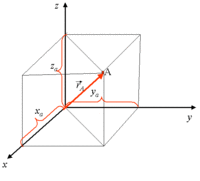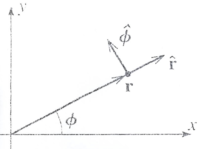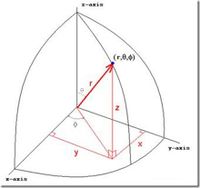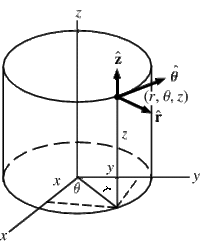Difference between revisions of "Forest UCM NLM"
(→Polar) |
(→Polar) |
||
| Line 49: | Line 49: | ||
:<math>\vec{r} \ne r \hat{r} +\phi \hat{\phi} </math>: <math>\phi</math> does not have the units of length | :<math>\vec{r} \ne r \hat{r} +\phi \hat{\phi} </math>: <math>\phi</math> does not have the units of length | ||
| + | |||
| + | The dependence of | ||
Velocity: | Velocity: | ||
Revision as of 21:14, 17 June 2014
Newton's Laws of Motion
Limits of Classical Mechanic
Classical Mechanics is the formulations of physics developed by Newton (1642-1727), Lagrange(1736-1813), and Hamilton(1805-1865).
It may be used to describe the motion of objects which are not moving at high speeds (0.1) nor are microscopically small ( ).
The laws are formulated in terms of space, time, mass, and force:
Space and Time
Space
Cartesian, Spherical, and Cylindrical coordinate systems are commonly used to describe three-dimensional space.
Cartesian
Vector Notation convention:
Position:
Velocity:
- = =
cartesian unit vectors do not change with time (unit vectors for other coordinate system types do)
- = =
Polar
Position:
- : does not have the units of length
The dependence of
Velocity:
- = =
cartesian unit vectors do not change with time (unit vectors for other coordinate system types do)
- = =
The unit vectors are changing in time. You could express the position vector in terms of cartesian unit vector in order to avoid this



